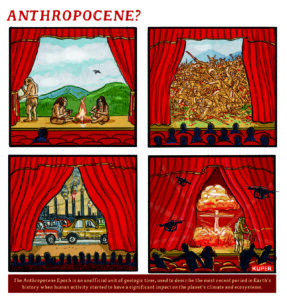A Warming Climate Will Alter the Soil That Feeds Us
One of the main species of microbes that hold the soil together is likely to be affected by rising temperatures, with unpredictable consequences for fertility and erosion.
By Tim Radford, Climate News NetworkThis piece first appeared at Climate News Network.
London, 4 July – Global warming may be about to change the ground under our feet – and perhaps not in a good way. It could be about to affect one of the most important communities on the planet: the tiny microbes that make life possible for the rest of creation, according to new research by scientists in the US and Spain.
Cyanobacteria are almost everywhere, have been around for the whole of life’s 3.5 billion-year history, and fix nitrogen from the atmosphere to fertilise plants and feed animals.
They are so common, and so numerous, that they form collectives that can be picked up by hand, and be seen even from space. As photosynthesisers, these blue-green algae also deliver the oxygen to keep the animal world on the move.
Ferrari Garcia-Pichel and colleagues report in the journal Science that they examined cyanobacteria in desert soils through the whole of North America. They found that two species dominated. One, called Microceleus steenstrupii, lives in the hot deserts while the other, M. vaginatus, prefers cold dry places.
But, of course, the planet is becoming warmer with each decade. “By using our data with current climate models, we can predict that in 50 years, the cyanobacterium that fares better in warm temperatures will push the cold-loving one off our map,” said Professor Garcia-Pichel.
“M. steenstrupii could completely dominate the crusts everywhere in our study area by then. Unfortunately we don’t know much about this microbe or what will happen to the ecosystem in the absence of M. vaginatus.”
The real hazard, for humans and other creatures that depend on cyanobacteria – and that adds up to all life on Earth – is that there is likely to be a knock-on effect on soil fertility, and soil erosion: it is the “living crusts” formed by these microbes that in many places hold the soil together, and sometimes researchers try to combat cases of severe erosion by injecting these cyanobacteria into the dust to act as soil stabilisers.
The finding is ominous: but an omen of what? Once again, researchers have unearthed – to use an appropriate metaphor – evidence of the intricacy of the connections between air, water, rock, temperature, life and climate.
But this same discovery is a reminder of just how little science yet knows about the microbiology of the world beneath our feet. Before this research, nobody had expected cyanobacteria to have divided the deserts into two separate kingdoms, with presumably two separate ecologies.
“Our study is relevant beyond desert ecology”, says Garcia-Pichel. “It exemplifies that microbial distributions and the partitioning of their habitats can be affected by global change, something we’ve long known for plants and animals. This study tells us we can no longer neglect microbes in our considerations.”
Your support matters…Independent journalism is under threat and overshadowed by heavily funded mainstream media.
You can help level the playing field. Become a member.
Your tax-deductible contribution keeps us digging beneath the headlines to give you thought-provoking, investigative reporting and analysis that unearths what's really happening- without compromise.
Give today to support our courageous, independent journalists.






You need to be a supporter to comment.
There are currently no responses to this article.
Be the first to respond.